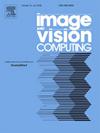FF-UNet: Feature fusion based deep learning-powered enhanced framework for accurate brain tumor segmentation in MRI images
IF 4.2
3区 计算机科学
Q2 COMPUTER SCIENCE, ARTIFICIAL INTELLIGENCE
引用次数: 0
Abstract
Medical imaging technology plays a crucial role in various medical sectors, aiding doctors in diagnosing patients. With brain tumors becoming a significant health concern due to their high morbidity and mortality rates, accurate and efficient tumor segmentation is essential. Manual segmentation methods are prone to errors and time-consuming. In this study, we investigate the potential of deep learning-based brain tumor MRI image segmentation techniques. We propose an enhanced approach called FF-UNet, which leverages feature fusion and combines the power of UNet and CNN models to improve segmentation accuracy. Preprocessing techniques are employed to enhance tumor visibility, followed by the utilization of a customized layered UNet model for segmentation. To mitigate overfitting, dropout layers are introduced after each convolution block stack. Additionally, a CNN process leverages the context of brain tumor MRI images to further enhance the model's segmentation performance. Experimental results demonstrate that our proposed framework outperforms state-of-the-art models in differentiating brain tissue. Across all datasets, our method achieves above 98% accuracy, with precision and Jaccard coefficient both exceeding 90%. Evaluation metrics such as the Jaccard index, sensitivity, and specificity validate the robust performance of our approach. The FF-UNet model holds great potential as a viable diagnostic tool, enabling radiologists to accurately segment brain tumor images and improve patient care.
FF-UNet:基于特征融合的深度学习增强框架,用于MRI图像中精确的脑肿瘤分割
医学影像技术在各个医疗领域发挥着至关重要的作用,帮助医生诊断患者。脑肿瘤由于其高发病率和死亡率而成为一个重要的健康问题,准确和有效的肿瘤分割至关重要。人工分割方法容易出错,且耗时长。在这项研究中,我们探讨了基于深度学习的脑肿瘤MRI图像分割技术的潜力。我们提出了一种称为FF-UNet的增强方法,它利用特征融合并结合UNet和CNN模型的功能来提高分割精度。采用预处理技术增强肿瘤可见性,然后利用定制的分层UNet模型进行分割。为了减轻过拟合,在每个卷积块堆栈之后引入dropout层。此外,CNN过程利用脑肿瘤MRI图像的背景来进一步增强模型的分割性能。实验结果表明,我们提出的框架在区分脑组织方面优于最先进的模型。在所有数据集上,我们的方法达到98%以上的准确率,精度和Jaccard系数都超过90%。诸如Jaccard指数、敏感性和特异性等评估指标验证了我们方法的稳健性能。FF-UNet模型作为一种可行的诊断工具具有巨大的潜力,使放射科医生能够准确地分割脑肿瘤图像并改善患者护理。
本文章由计算机程序翻译,如有差异,请以英文原文为准。
求助全文
约1分钟内获得全文
求助全文
来源期刊

Image and Vision Computing
工程技术-工程:电子与电气
CiteScore
8.50
自引率
8.50%
发文量
143
审稿时长
7.8 months
期刊介绍:
Image and Vision Computing has as a primary aim the provision of an effective medium of interchange for the results of high quality theoretical and applied research fundamental to all aspects of image interpretation and computer vision. The journal publishes work that proposes new image interpretation and computer vision methodology or addresses the application of such methods to real world scenes. It seeks to strengthen a deeper understanding in the discipline by encouraging the quantitative comparison and performance evaluation of the proposed methodology. The coverage includes: image interpretation, scene modelling, object recognition and tracking, shape analysis, monitoring and surveillance, active vision and robotic systems, SLAM, biologically-inspired computer vision, motion analysis, stereo vision, document image understanding, character and handwritten text recognition, face and gesture recognition, biometrics, vision-based human-computer interaction, human activity and behavior understanding, data fusion from multiple sensor inputs, image databases.
 求助内容:
求助内容: 应助结果提醒方式:
应助结果提醒方式:


